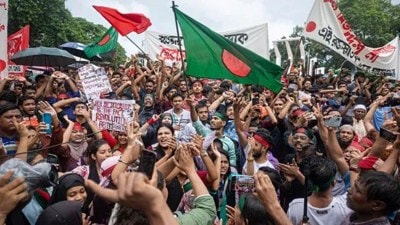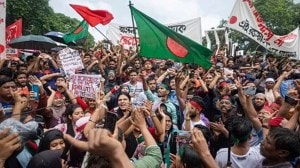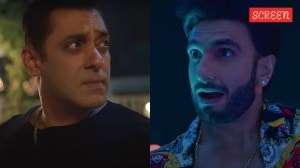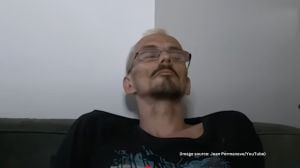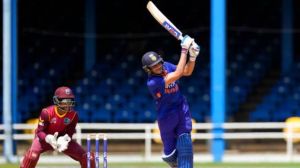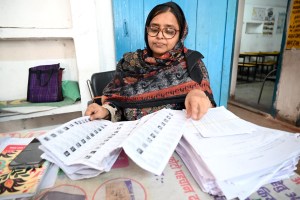Siddaramaiah bites the bullet, Karnataka Cabinet ‘accepts’ much-delayed caste report
Commissioned back in 2015 when Siddaramaiah was CM for first time, caste survey report has been put away by successive state governments, including Congress’s for a year, due to opposition by dominant Lingayat, Vokkaliga groups.
 The survey was incidentally commissioned during Siddaramaiah’s first tenure as CM, from 2013 to 2018. (File photo)
The survey was incidentally commissioned during Siddaramaiah’s first tenure as CM, from 2013 to 2018. (File photo)OVER a year after it was submitted to Chief Minister Siddaramaiah in February 2024, the Karnataka Cabinet Friday accepted the Socio-Economic and Educational Survey report, popularly referred to as caste survey.
The 50-volume report, submitted by the Karnataka State Commission for Backward Classes in February 2024, is scheduled to be discussed at a Special Cabinet meeting on April 17.
Briefing the media on the report, Backward Classes Welfare Minister Shivaraj Tangadagi said the survey assessed 54 parameters on the social and educational status of Karnataka households. “Of the 6.35 crore population in the state, 5.98 crore people from 1.35 crore families were surveyed,” he said, making it 94.17% of the population. Around 37 lakh families, or 5.83% of the total population, were not surveyed.
The survey was incidentally commissioned during Siddaramaiah’s first tenure as CM, from 2013 to 2018. The backward classes commission, under its former chairman H Kantharaj, had conducted the door-to-door survey from April 11 to May 30, 2015.
The two sealed boxes containing the report were opened during the Cabinet meeting Friday.
A volume on the survey and its key findings, a volume on caste-wise population, a volume on characteristics of castes except Scheduled Castes (SC) and Scheduled Tribes (ST), two volumes on characteristics of SC and ST communities, volumes on Assembly seat-wise, district-wise and taluka-wise caste data were among the 50 volumes placed before the Cabinet. “Some findings of the volumes were discussed, following which a Special Cabinet meeting was convened for April 17 to deliberate on all the details of the survey,” Tangadagi said.
According to Tangadagi, a total of 1.6 lakh officials and other staff were deployed for the state-wide survey. The data compiled by government officials was digitised at district centres by the government-run Bharat Electronics Limited (BEL) at a cost of Rs 43.09 crore. For the survey, Rs 7 crore was received from the Centre, while the state set aside Rs 185.79 crore. The total cost of the survey was Rs 165.51 crore, the minister said, adding that the data was validated by the Indian Institute of Management-Bangalore.
Law and Parliamentary Affairs minister H K Patil said the report did not find any opposition when it was submitted to the state Cabinet. “We will discuss it again on April 17 and see if any changes are required,” he said, adding the survey data would be made public in the coming days.
Soon after the Congress came to power in March 2023, Siddaramaiah had moved to accept the report and implement its recommendations. But this was met with opposition from leaders of dominant Vokkaliga and Lingayat communities, including Deputy CM D K Shivakumar (a Vokkaliga), who had called its findings “unscientific”. Leaders from the SC, ST and Other Backward Class (OBC) groups had demanded that the CM accept the report, which is expected to put their numbers at substantially more than currently estimated.
Even during Siddaramaiah’s first term as CM, the tabling of the report had been put off with the Congress fearing its repercussions during the 2018 Assembly polls. Subsequent governments also did not take up the report due to concerns that it would upset dominant communities of the state.
A version of the report, which got “leaked” in 2018, indicated that the Lingayats and Vokkaligas constituted only 9.8% and 8.2% of Karnataka’s population, instead of the 17% and 15% that is usually assumed.
In February, after the Congress government in Telangana had tabled a statement on its own caste survey in the state Assembly, Leader of the Opposition in the Lok Sabha Rahul Gandhi had hailed the move and used it to call for a nation-wide caste census. Highlighting the survey had found that “90% of Telangana’s population belonged to Dalit, Adivasi, Backward Class and minority communities”, Gandhi had said, “Once the caste census is placed in Parliament, we will know exactly how much of the country’s wealth, power, and institutions are owned by this 90% population of the country.”


